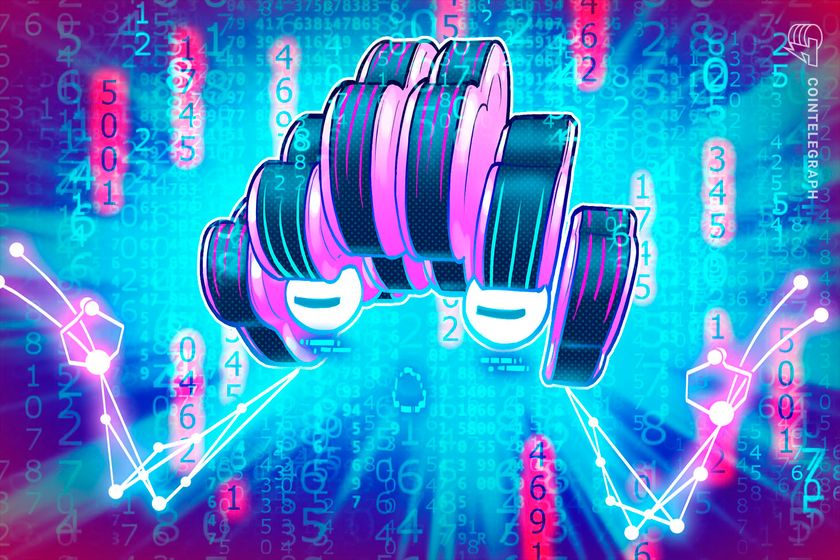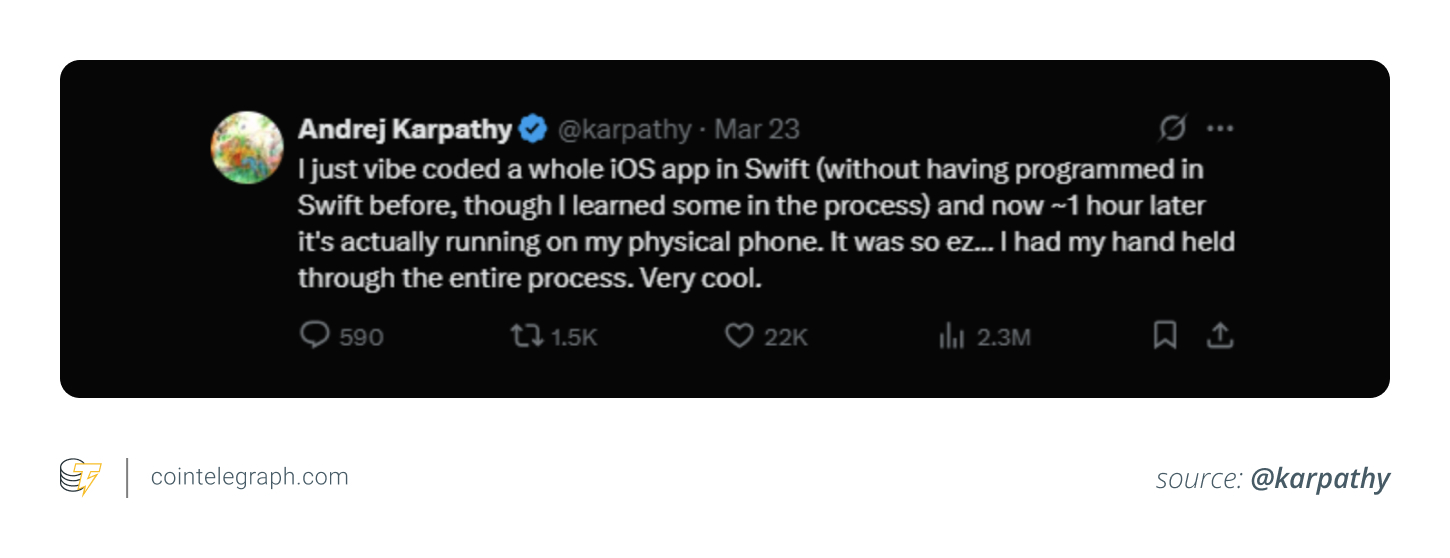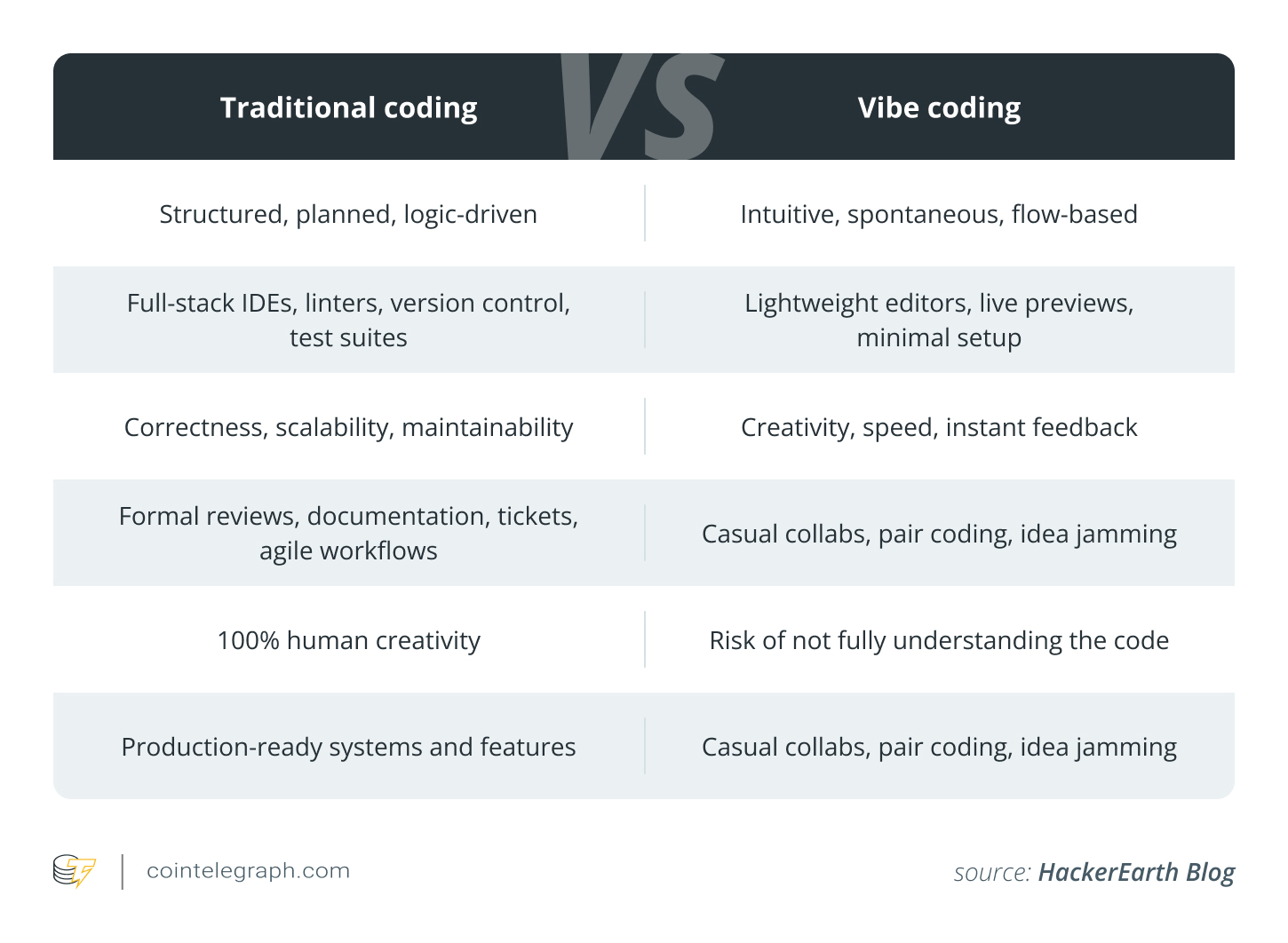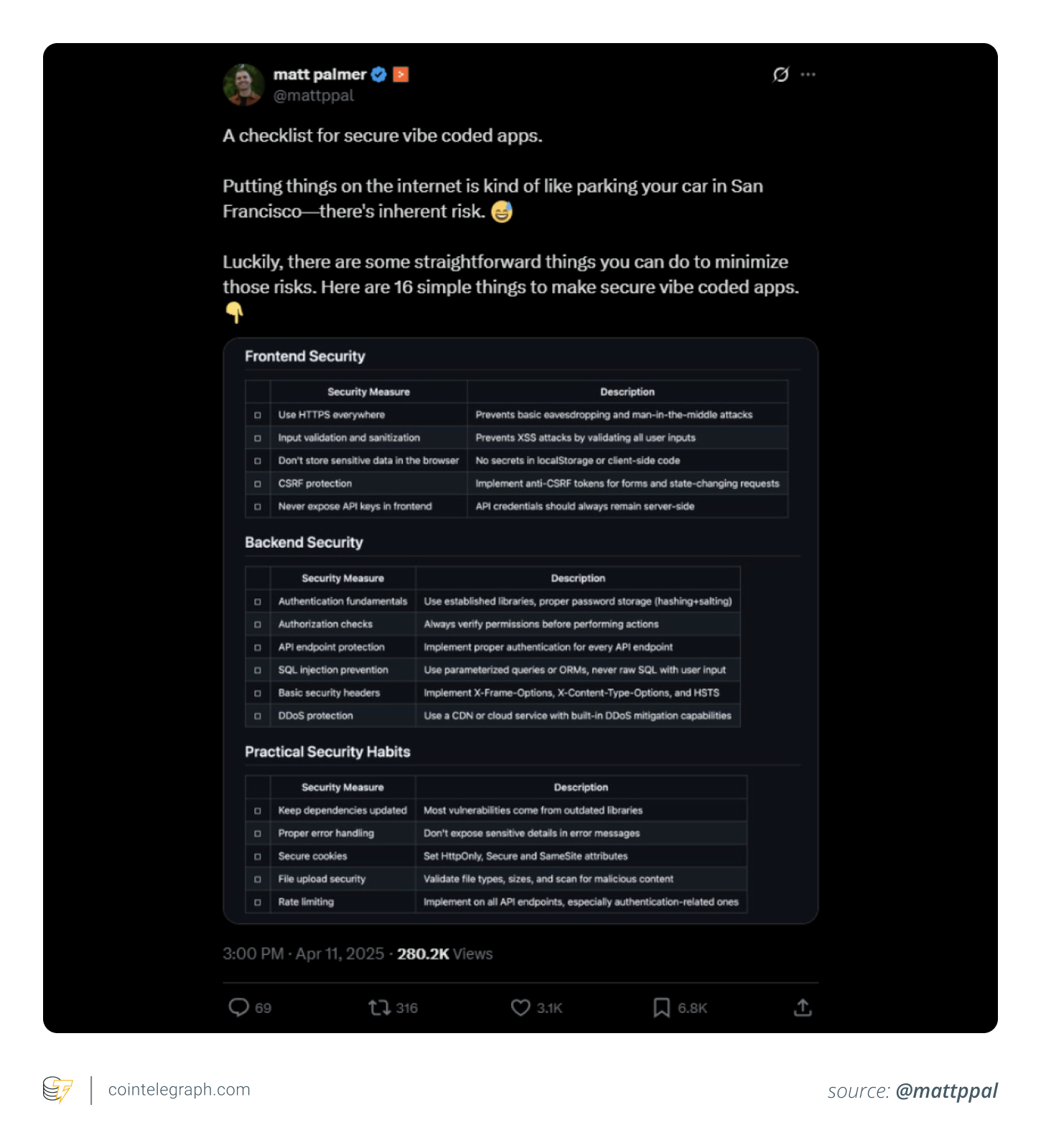AI vibe coding: what it is, why it’s risky, and how to stay safe



What is AI vibe coding?
AI vibe coding is a novel approach to software development that generates advanced, executable code based on well-crafted natural language user prompts.
Yet another innovation fueled by artificial intelligence capabilities, AI vibe coding is proving to be a game-changer, especially for non-technical enthusiasts who can now experiment with software development and contribute to the ever-expanding technology ecosystem.
At a fundamental level, AI vibe coding uses advanced machine learning algorithms to interpret natural language instructions and generate corresponding code in the desired software language.

Users can input their requirements in plain language, such as “create a crypto website with a blog section and user login functionality,” and AI tools will generate the appropriate body of code needed to realize the project. This contrasts with traditional software development practices, which require the user to be skilled in programming languages and incorporate formal reviews along the journey.

Notably, Charlie Shrem, an early Bitcoin pioneer, is bringing back the Bitcoin faucet — a site where people earn small amounts of Bitcoin by solving CAPTCHAs. His new site, 21million.com, is inspired by a 2010 version that helped spread Bitcoin in its early days.

Right now, the site isn’t fully working and has no Bitcoin (BTC) to claim, but Shrem says it’s meant to help new users get started, with no hidden catch. He’s building it using AI tools, calling it “vibe coding.” Shrem, who once ran a major Bitcoin exchange, hopes this project will spark fresh interest in Bitcoin.
While AI vibe coding can lead to faster software development results, there is a risk that the output generated from a vibe coding approach may not be adequately reviewed and signed off, which is where traditional coding practices continue to offer safeguards.
Did you know? The term “vibe coding” was popularized by OpenAI co-founder Andrej Karpathy, who described it as a way to “fully give in to the vibes,” effectively embracing AI-generated code without manually tweaking it.
Key features of AI vibe coding
Unlike traditional coding, AI vibe coding requires no formal software development qualifications for users to get started. All you need to vibe code is an idea, with the ability to write it clearly using natural language prompts.
Fundamentally, AI vibe coding is characterized by the following features:
- Natural language processing (NLP): AI vibe coding relies heavily on NLP to understand and process user instructions.
- Machine learning: As with all practical applications of AI, machine learning models trained on vast amounts of coding data are used to generate executable code based on user prompts.
- Real-time feedback: Users can receive and provide immediate feedback on the output, allowing for efficient code iteration and refinement.
- Accessibility: Vibe coding democratizes software development, enabling individuals without formal coding training to create functional applications. It lowers or eliminates the entry barriers into programming, empowering more users to participate in technology design and foster innovation from diverse perspectives.
Why is AI vibe coding considered risky?
Despite its obvious benefits, AI vibe coding carries many risks that users must be aware of and mitigate as required. These risks range from security concerns to ethical and legal implications.
Understanding the risks associated with AI vibe coding can help users alleviate potential issues and legal implications. Here’s a post by Matt Palmer outlining common safeguards to be considered for AI vibe coding.

Some of the common risks associated with AI vibe coding are:
- Security concerns: AI-generated code might be susceptible to vulnerabilities if the underlying algorithms fail to account for security best practices. After all, AI learns from somewhere else! Therefore, inexperienced users might inadvertently create applications prone to cyberattacks, exposing sensitive data and risking user trust. This is particularly concerning when building applications that handle personal or financial information, as even a minor security flaw can have significant repercussions.
- Code quality: While AI tools can generate functional code, the quality and reliability of this code may vary, and will certainly not cater to all nuances commonly found in a real-world scenario. Similarly, AI’s understanding of user requirements might not always align perfectly with the intended functionality, leading to bugs and inefficiencies. Furthermore, the AI might not always follow the best coding practices, resulting in code that is difficult to maintain and scale. This can be especially problematic in large-scale projects where code quality is paramount.
- Ethical concerns: AI vibe coding can raise ethical and legal questions, especially concerning intellectual property. There might be ambiguity in ownership and copyright of AI-generated code, posing challenges for developers and users. Additionally, using AI in coding can lead to ethical concerns about job displacement and the devaluation of human expertise. It’s crucial for developers and organizations to navigate these issues thoughtfully and responsibly, especially when relying on vibe coding practices for large-scale project development.
- Over-reliance on AI: As AI vibe coding becomes more prevalent, there is a risk of developers becoming overly reliant on AI tools, potentially diminishing their traditional coding skills and understanding. This reliance on AI can lead to a lack of deep technical knowledge, making it difficult for developers to troubleshoot issues or innovate independently. Continuous learning and skill enhancement are essential to maintain a balanced approach to software development.
- Explainability: While AI vibe coders may eventually even get the job done with vibe coding, they may not always have the skills required to review, debug, or refactor their code due to the lack of traditional software development skillsets, impacting the explainability and ultimately, reliability of code.
Did you know? A major risk of AI vibe coding is the emergence of “slopsquatting,” a new type of supply chain attack where AI-generated code suggests non-existent package names, which attackers can exploit by creating malicious versions — talk about innovating to wreak havoc!
How to vibe code safely
To mitigate the risks associated with AI vibe coding, users should adopt certain best practices. These practices can help ensure the AI-generated code is secure, reliable and ethically sound.
Best practices to vibe code safely include:
- Learning best practices: Even though AI vibe coding simplifies the development process, users should still familiarize themselves with basic coding principles. This knowledge will help in understanding the AI-generated code and making necessary adjustments. It also enables users to identify potential issues and apply best practices, ensuring the code is robust and maintainable.
- Implementing security measures: It is crucial to ensure that the AI-generated code adheres to security best practices. As seen in a popular example on X, where a non-technical founder publicly shared his journey to building a web-based application exclusively with vibe coding, a lack of security considerations resulted in cyber threat actors attacking the application, resulting in it being taken down.
Users should incorporate security checks and validations to safeguard their applications against potential threats. Regularly updating and patching the code, conducting security audits and following industry standards can help mitigate security risks.
- Regular audits and reviews: Conducting regular code reviews can help identify vulnerabilities and improve the overall quality of AI-generated code. Collaborating with experienced developers for feedback and insights is highly beneficial. Peer reviews and collaborative coding sessions can provide valuable perspectives and enhance code quality.
- Understanding ethical and legal implications: Users should know the ethical and legal ramifications of using AI-generated code. Consulting with legal experts on intellectual property and copyright issues can prevent future complications. Additionally, being informed of ethical guidelines and industry standards can help developers navigate the evolving landscape of AI in coding.
How can blockchain support AI vibe coding?
Blockchain technology has the potential to enhance security, transparency and collaboration in AI vibe coding, complementing existing platforms like GitHub.
Here’s how it can help:
- Securing AI-generated code: Blockchain’s decentralized and tamper-resistant design can help verify the integrity of AI-generated code. By recording hashes or proofs of code versions onchain (alongside repositories like GitHub), developers can detect unauthorized changes and maintain a secure, auditable history.
- Maintaining transparency: While platforms like GitHub track code changes, blockchain can provide an additional transparent, immutable log of modifications and interactions. This makes it easier to trace code evolution and verify its origins, improving accountability in collaborative AI projects.
- Enhancing collaboration: Blockchain-based systems can offer secure, trustless environments for developers to exchange code, feedback and ideas, complementing centralized platforms like GitHub. Though still emerging, these decentralized approaches have the potential to further strengthen collaboration in AI development.